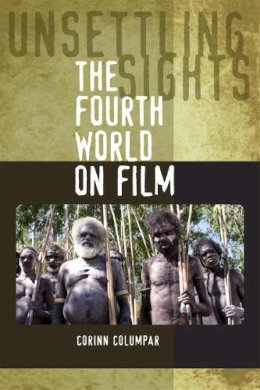
Stock image for illustration purposes only - book cover, edition or condition may vary.
Unsettling Sights: The Fourth World on Film
Corinn Columpar
€ 56.78
FREE Delivery in Ireland
Description for Unsettling Sights: The Fourth World on Film
Paperback. Examines the politics of representing aboriginality. This title discusses the cinematic construction and transnational circulation of aboriginality. It analyzes how indigeneity is represented in cinema. It also explores contextual issues in filmmaking such as funding, personnel, modes of production, and means of distribution. Num Pages: 272 pages, 9 illustrations. BIC Classification: APFA. Category: (UP) Postgraduate, Research & Scholarly. Dimension: 228 x 152 x 18. Weight in Grams: 340.
This is a transnational study of aboriginality and cinema. ""Unsettling Sights: The Fourth World on Film"" examines the politics of representing aboriginality, in the process bringing frequently marginalized voices and visions, issues and debates into the limelight. Corinn Columpar uses film theory, postcolonial theory, and indigenous theory to frame her discussion of the cinematic construction and transnational circulation of aboriginality. The result is a broad interdisciplinary analysis of how indigeneity is represented in cinema, supported by more than twenty rigorous and theoretically informed case studies of contemporary feature films by both first and fourth-world filmmakers in the United States, Canada, New Zealand, and Australia. Columpar relies heavily on textual analysis of the films but also explores contextual issues in filmmaking such as funding, personnel, modes of production, and means of distribution. Part one of ""Unsettling Sights"" focuses on contact narratives in which the aboriginal subject is constructed in reactive response to a colonizing or invading presence. Films such as ""The Piano and The Proposition"", wherein a white man 'goes native', and ""The New World and Map of the Human Heart"", which approach contact from the perspective of an aboriginal character, serve as occasions to examine the ways in which aboriginal identities are negotiated within dominant cinema. Part two shifts the focus from contact narratives to films that seek to define aboriginality on its own terms, with reference to a (lost) homeland and/or indigenous practices of (hi)story-telling. While texts such as ""Once Were Warriors"" and ""Smoke Signals"" foster an engagement with issues of deterritorialization, relocation, and urbanization, discussion of ""BeDevil"", ""Atanarjuat"", and ""The Business of Fancydancing"", among others, bring questions of voice, translation, and the relationship between cinema and oral tradition to the forefront. ""Unsettling Sights"" is the first significant, scholarly examination of Aboriginality and cinema in an international context and will be invaluable to scholars and students in many fields including cinema studies, anthropology, critical race studies, cultural studies, and postcolonial studies.
Product Details
Format
Paperback
Publication date
2010
Publisher
Southern Illinois University Press
Condition
New
Place of Publication
Carbondale, United States
ISBN
9780809329625
SKU
V9780809329625
Shipping Time
Usually ships in 7 to 11 working days
Ref
99-1
About Corinn Columpar
Corinn Columpar is assistant professor of English and cinema studies at the University of Toronto and author of Unsettling Sights: The Fourth World on Film. Sophie Mayer is an independent scholar and author of The Cinema of Sally Potter: A Politics of Love.
Reviews for Unsettling Sights: The Fourth World on Film
"Unsettling Sights is a welcome addition to the emergent field of scholarship and criticism on Indigenous media.... Columpar's clear and incisive prose makes this book accessible across the range of relevant fields, from cinema/media to Indigenous and postcolonial studies." - Faye Ginsburg, author of Mediating Culture: Indigenous Identity in the Digital Age "This book's beautifully written close analyses of a wide and varied range of films carefully attends to the cultural and political stakes of this cinema for Indigenous communities, illuminating thorny, complex issues such as sovereignty. It is without a doubt a must-read text for all cinema studies students and scholars." - Therese Davis, author of The Face on the Screen: Death, Recognition and Spectatorship"
